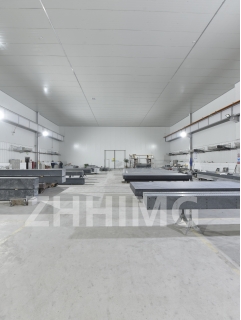Assembly, testing, and calibration of granite precision apparatus are critical processes that ensure the quality of the final product. Granite is a preferred material for manufacturing precision apparatus due to its high stability and rigidity. In this article, we will discuss the step-by-step process of assembling, testing, and calibrating granite precision apparatus.
Step 1: Check the Quality of Granite Block
One of the essential things to do before the assembly process is to check the quality of the granite block. The granite block should be flat, square, and free from any defects such as chips, scratches, or cracks. If any defects are noticed, then the block should be rejected, and another one should be acquired.
Step 2: Prepare the Components
After acquiring a good quality granite block, the next step is to prepare the components. The components include the baseplate, spindle, and dial gauge. The baseplate is placed on the granite block, and the spindle is placed on the base plate. The dial gauge is attached to the spindle.
Step 3: Assemble the Components
Once the components are prepared, the next step is to assemble them. The baseplate should be placed on the granite block, and the spindle should be screwed onto the baseplate. The dial gauge should be attached to the spindle.
Step 4: Test and Calibrate
After assembling the components, it is essential to test and calibrate the apparatus. The purpose of testing and calibration is to ensure that the apparatus is accurate and precise. Testing involves taking measurements using the dial gauge, while calibration involves adjusting the apparatus to ensure that it is within acceptable tolerances.
To test the apparatus, one can use a calibrated standard to check the accuracy of the dial gauge. If the measurements are within the acceptable tolerance level, then the apparatus is considered accurate.
Calibration involves making adjustments to the apparatus to ensure that it meets the required tolerances. This may involve adjusting the spindle or the baseplate. Once the adjustments are made, the apparatus should be tested again to ensure that it meets the required specifications.
Step 5: Final Inspection
After testing and calibration, the final step is to perform a final inspection to ensure that the apparatus meets the required quality standards. The inspection involves checking for any defects or anomalies in the apparatus and ensuring that it meets all the required specifications.
Conclusion
The assembly, testing, and calibration of granite precision apparatus are critical processes that ensure the quality of the final product. These processes require attention to detail and high levels of precision to ensure that the final product is accurate and meets the required specifications. By following the above steps, one can assemble, test, and calibrate granite precision apparatus effectively and ensure that the final product meets all quality standards.
Post time: Dec-22-2023

